Here’s a twist on a hunting tale. Guest writer Aimee Botkins kept a hunting journal of this year’s elk hunt. We think you’ll enjoy her observations and musings, as she gets on pursuit of magnificent beasts with her dad in their native state of Wyoming. ~ BB
Sponsored by Stag Arms
This year’s hunting season began, as always, with a loose framework of seasons and dates, sorting out what, where and when. Weaving in and out of waterfowl, deer, antelope and throwing in a general elk tag just for kicks. Threading the needle between general deer and elk tags and my husband’s devotion to pronghorn and waterfowl while balancing an early October work trip was a feat. We moved 18 months ago, so figuring out new hunting grounds has taken some work. I would much prefer to have tags in hand that I might have to eat later as opposed to being caught lacking in the field.
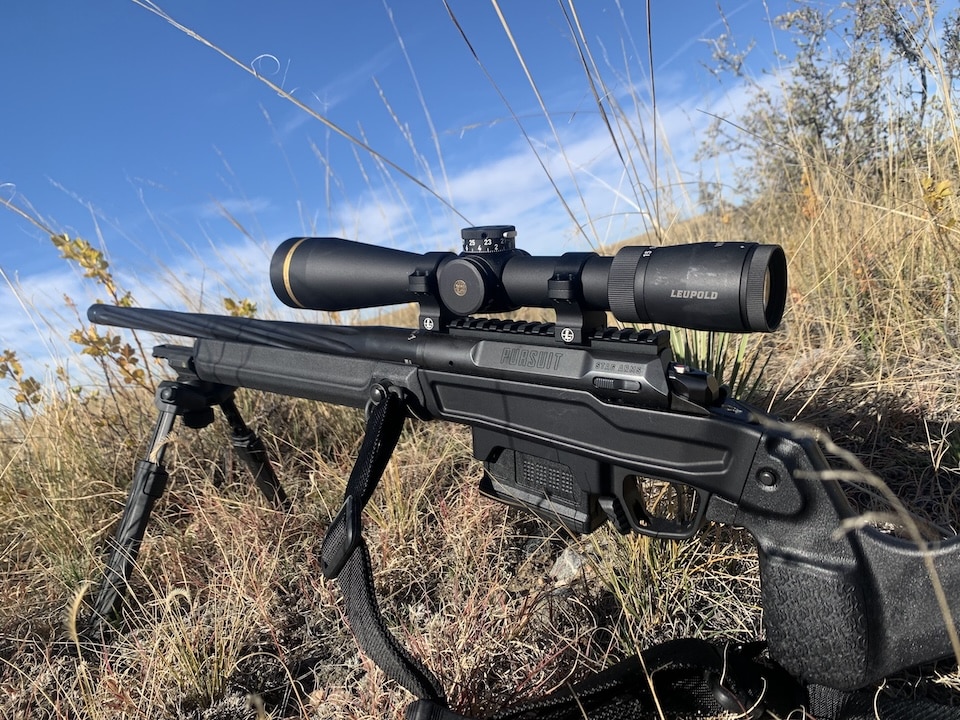
For this season, I chose the new Stag Arms Pursuit Bolt Action rifle, chambered in .308. I didn’t anticipate the need for shooting across an extreme distance in any case. We laid out many options for the surrounding areas, some promising possibilities, but all complete question marks for our inexperience up here. We got word that some elk have been wreaking havoc on some local agriculture down in the same area I grew up hunting. The impact on livestock grazing range and alfalfa harvests can be devastating when a herd of elk decides to push through. I haven’t hunted that area myself in several years and I was excited at the prospect of getting back out there for something new.
This hunt is as much about putting meat in the freezer as it is to help the local agricultural community. As the contact with the landowners out there, my dad was the obvious pick for a hunting partner. His years in the field by far exceed my own and he has been the guiding hand of my hunting career.

It’s always a good idea to keep a hunting journal for areas you frequent, and I wasn’t sure what to expect out of the elk. When journaling, I tend to get distracted with introspection, so I always save the writing until we take breaks or at the end of the day. Beginning the journaling process – noting the rough times, conditions and observations – soon turned into documenting a nostalgic experience, reliving my hunting origins.

5:45 a.m.
Early mornings in preparation for a hunt with my dad are an experience I have cherished since I was 12. Knives, layers, hats, gloves, orange, snacks and water. Double checking the ammo before hopping in the truck. A deep orange glow building on the horizon is urging us to be in position before the sun beats us to it. Clear cloudless skies and calm air are rare for this area, but welcome this morning. Taking the winding two track roads and slowing to clear cattle gates and close them again behind us. Filling my lungs with the cool, dry air of the plains, we pause to glass the draws and horizons. Early sightings of pronghorn grazing in the high grass are always a hopeful sign. Catching some mule deer as they emerge from the buck brush, we find a spot to stop to get out for a walk. I layer on my gear, careful to place items for ease of reach—knife, gloves, water, license, ammo, knife, gun. Better to have too many knives than not enough, and there’s no such thing as too many knives. This ritual I have built over my years of hunting is as much about efficiency and peace of mind as it is about superstition.
6:45 a.m.
Pockets of cool damp fog rest in the low-lying draws. The scent of sage hanging heavy in the air. It has been a damp summer in this region, and I am surprised by how green the undergrowth is. Lush and soft under foot, even the sagebrush leaves are still supple putting a mute on our trek into the valley. By 7:15, the sun breaks the horizon shining on the rolling plains before me and I am reminded of why I love southeast Wyoming so much. Silvery sage reflects the brilliant gold of the rising sun and the vast expanse of country gleams eternally. The western horizon melts from deep blue to violet and the distant mountains loom large in a deep moody grey.

8 a.m.
My revery is interrupted and my attention brought back into sharp focus by movement just below our position. A pair of coyotes breaking from their den, yawn and stretch, warming themselves in the early light. They catch our movements, too, and give us a wide berth as they move out. Hunters watching hunters. These are not our quarry today.
I am following in my father’s footsteps quite literally this morning. As a young hunter, I always reasoned that if I stepped where he stepped and kept his pace, we wouldn’t be detected as a pair. Even at almost 40, hunting together for 28 years, this is a hard habit to break. Several years absent, but we still revert back into what always felt like a Zen state of hunting to me. In movement and intention, we mirror each other, covering opposing sides for glassing.
9 a.m.
The warmth of the sun means the wind will come up soon. Something to always keep awareness of. The wind tends to swirl out here – like the breath of the land. Particularly problematic if we venture down to the creek bottom. I am hoping we catch the elk on the move this morning, seeking solace in the draws cutting up the bluffs. I know going into this day that we will be lucky to find elk sign at all. Weather, or lack thereof, has not yet pushed the big herds from their mountain fortresses, but there have been sightings of bachelor bull gangs and small bands of cows moving through. Determined to stay optimistic, I turn my head back to the hills and we press on.
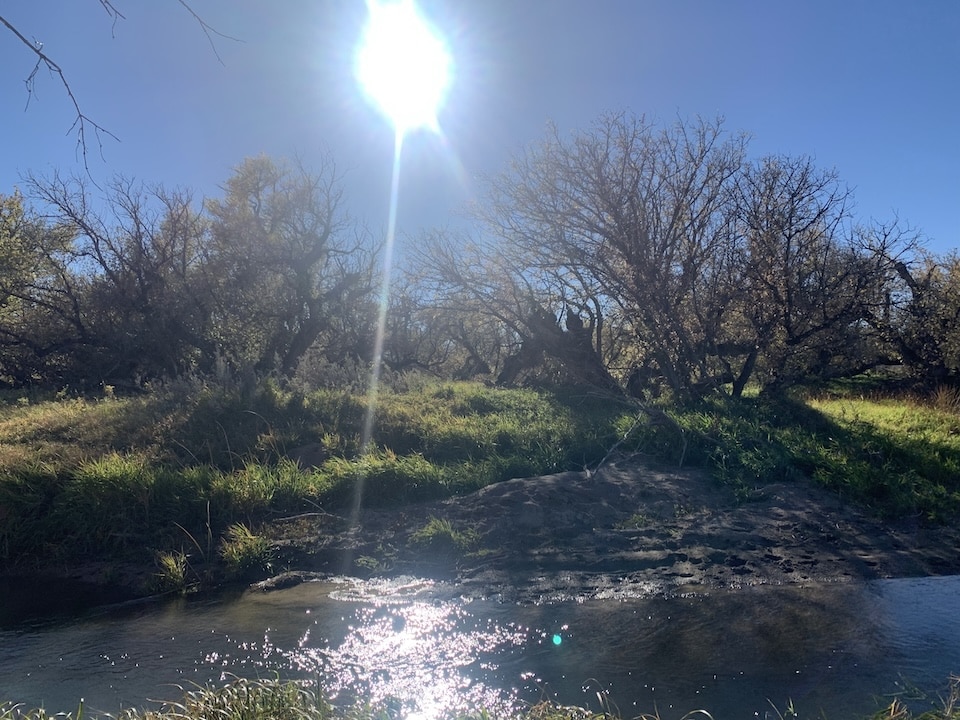
10 a.m.
It is always quite something to be reminded so sharply how rugged this country is. The vast expanse of the Great Plains seems endless and full of gently rolling hills punctuated by chalk bluffs, plumes of sagebrush and carved out by meandering creek bottoms. Running these hills all my life, I know better. The craggy and deceptively steep rises – rocky and unstable footing. Waist-heigh sagebrush, buck scrub you could get lost in, yucca plants sharp enough to penetrate the densest winter layers and cactus tossed about like confetti. The biggest mule deer I have seen in my life thrive here, disappearing into the brush as quickly as they appear. Prairie ghosts. Marching our way through the draws is slow going on two feet, laden with packs and rifles.
12:30 p.m.
It is warm now, much warmer than I would like it to be, and not just for all the miles we are putting on in this terrain. The elk will not be out here exposed like this and by now the sun has risen high enough that even the deep draws don’t provide enough shade for a small band of elk to hunker into. We rest on a small outcropping and discuss pushing farther, just one more hill or draw. Knowing we should give it a rest and break for lunch (and perhaps a nap), we make the hike back to the truck.

2 p.m.
Plotting our next move, we consider what intel we do have for the movement of the elk through this area. The erratic weather patterns in the early fall, paired with the widespread abundance of food sources, mean predictions are harder to make for these elk. We know the bands are small and they are a nomadic bunch not yet settled into a routine here. Even with the warmth of the day, the creek bottom will have retained cool air pockets, a perfect refuge from the sun for elk and deer alike. Not ideal, as the close quarters of the trees here make for poor visibility. We know where they frequent the water in a few places and also where to avoid the more heavily wooded patches. After careful consideration of the length of the waterway, we settle on a location to slip into the creek bottom.

3 p.m.
The coolness and moisture are welcome changes to the beating sun and whipping winds we have been in most of the day. Breaking across an alfalfa circle, we finally come upon some elk sign not half a day old. It is energizing and we pick up the pace as we push towards the marshy creek bed. Full of scrub oak and willows, it isn’t exactly what you would picture for elk, but more sign and tracks tell us the tale of their presence. This creek bottom, along with many places we have visited today, is punctuated by memories of my hunting origins. Places we have guided young hunters and shepherded their families along to watch. Young hunters who found their way to us either through the Holy Pursuit’s Dream Foundation, Pheasants Forever or veterans from Hunting with Heroes (some with special disabilities or terminal cancer). Each has a story along this creek bottom, across this swath of land we have trekked all day. My dad and I have spent the day pointing out these to each other. Remember this, remember that. My first buck, my last. Where I’d like to take my daughters when they are old enough. If these trees could talk, what would they remember? Silently stalking through the trees feels like going home.
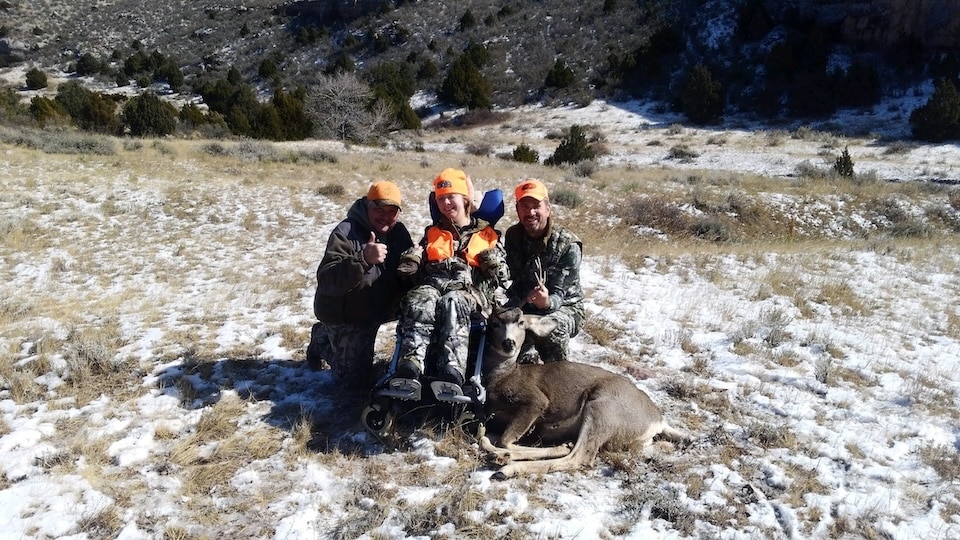
4:30 p.m.
The lowering sun means social hour for the mule deer who will be winding their way down to the water soon. It isn’t late yet, but the cooling temperature causes the whitetail to stir. The wind is swirling around us in the trees and rushes around the creek, breathing slowly and even. The deer are catching a hint of our scent, but it is clear we are more of a curiosity than a danger. They march and stomp toward and around us, snorting in protest as we continue our slow push upstream. Elk sign is sparse, but their tracks are still discernable among the deer and cattle that have been recently moved out.
5:30 p.m.
I catch a lone cow call on the breeze, a lost mew a few hundred yards away. I’m careful to consider all the sounds I’m hearing to be sure it’s a cow. Not a bird, not a creaking tree. Silently, I’m cursing myself for not grabbing the cow call from the truck before heading down, convinced we could bring her in if I had. My adrenaline spikes and suddenly, I am acutely aware of the pickle we are in. Pinned between groups of whitetail with what was moments ago an amusing display, is now a threat to the success of our mission. Trying to push closer to the cow will only blow the deer out and potentially run off the elk and any remaining chance we of a successful harvest. The deer continue to snort and stomp.
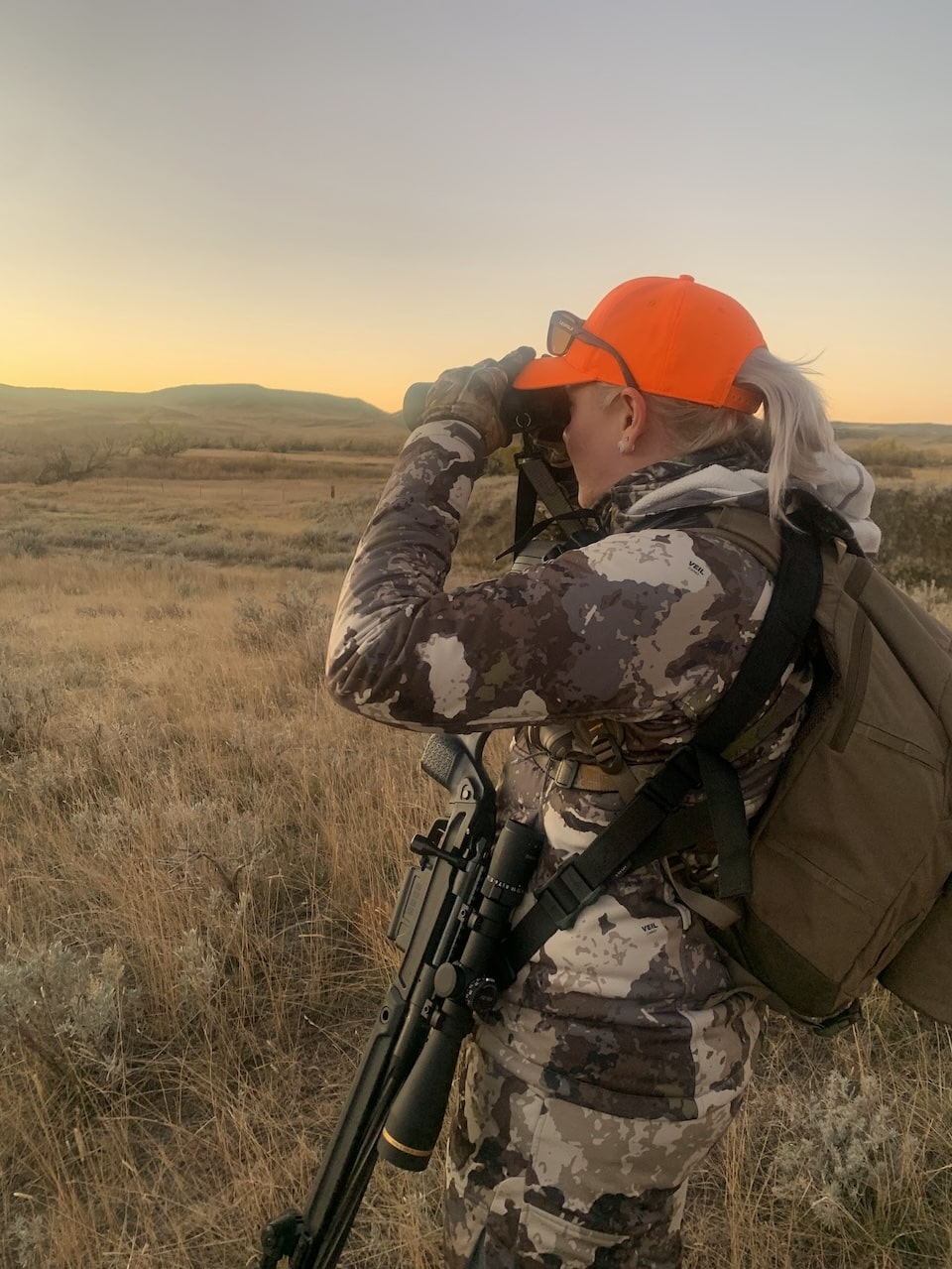
It’s sundown and I lose track of the elk as she’s either moved on or bedded down. The deer continue their loitering all around as the sun dips and we are losing the shooting light. Frustrated, Dad and I give each other a silent nod and know the day is done for us. The miles to go back to the truck grow long in the darkening canopy, but the the familiarity of this place persists. We easily find the bend where it is shallow enough to cross the creek. Mangled barbed wire hanging stiffly from an old stack yard and the head gate on the water tell us we are almost out. Marching back slow, tired and empty handed, we work on a strategy for the morning, talking aloud now.
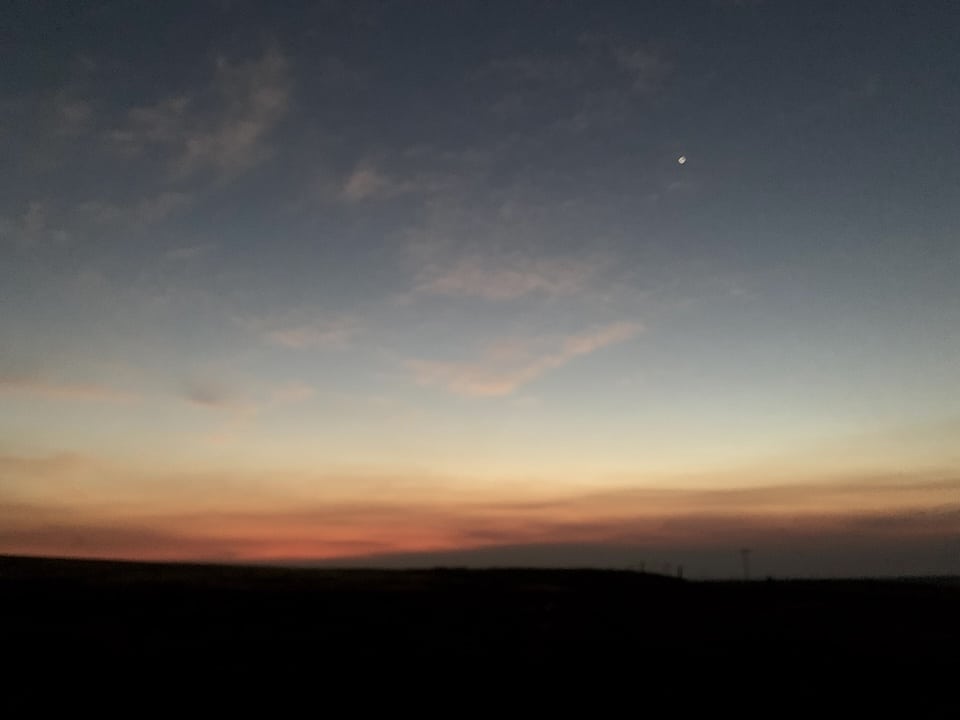
7:30 p.m.
The vast and cloudless sky opens to the moon and the first stars begin to shine as we reach the truck for the drive home. Miles and miles of hills and memories behind us now; we laugh at the pronghorn in the high grass. Just where we left them.
7 a.m.
Another early start and we are already parked and wading through the creek. We thought we tucked that cow into bed in that creek bottom last night. Deer are still out foraging and not quite returned to the safety of the scrub oak shade. The morning light, fog and breath of the land a repeat of yesterday. We make an approach to the bedding area we tucked the elk into the night before, slow and quiet. Breaking through the brush and finding only empty beds is intensely frustrating.
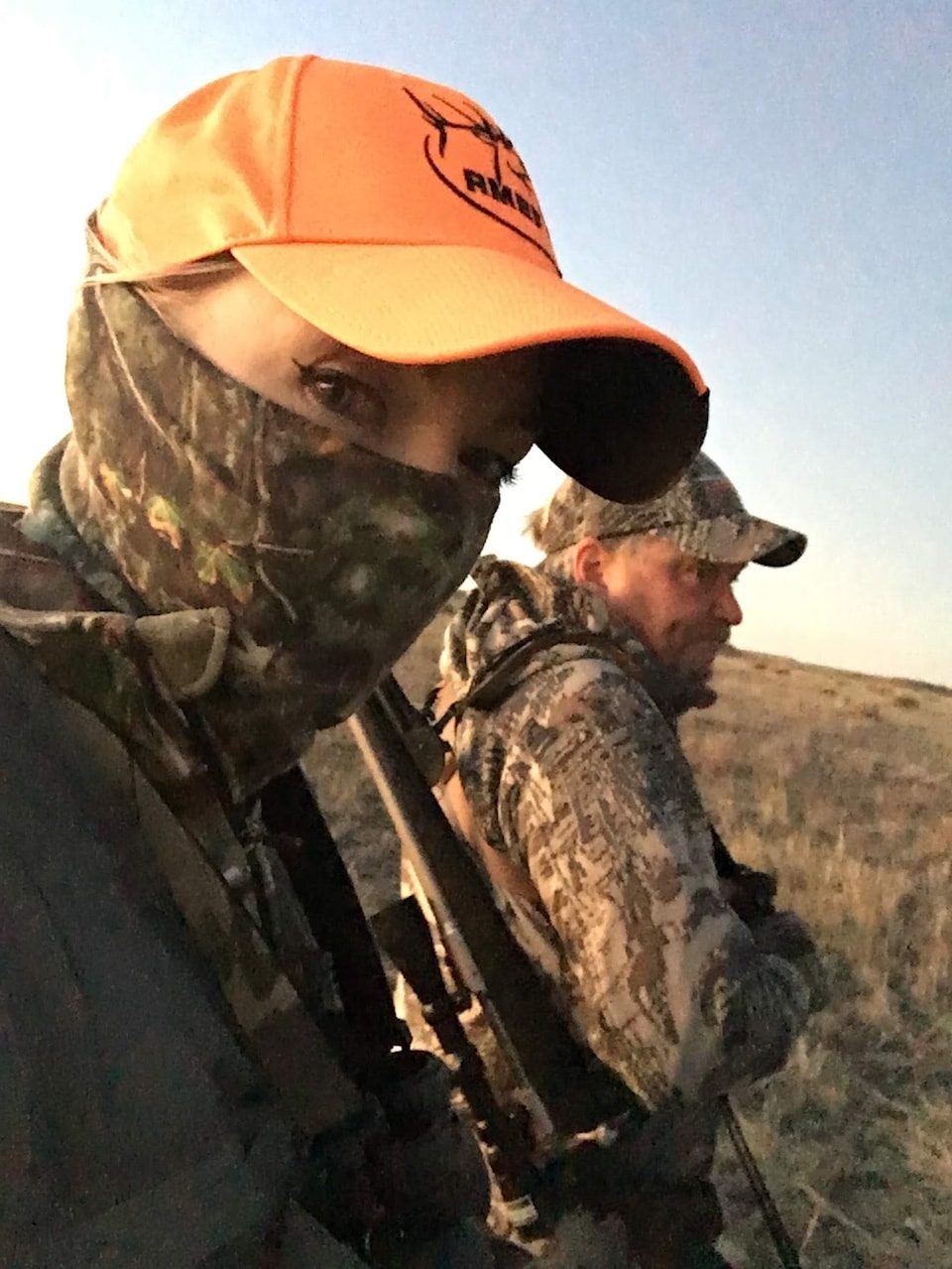
9 a.m.
We make the decision, given the lack of sign around us, to move farther upstream in search of anything to keep driving the chase. Pulling out the cow call, we try to locate any elk that may yet be lingering. There is no wind yet and the sound carries, bouncing off the water. Nothing but silence and empty beds in the tall grass are here.

10 a.m. and on
The rest of the day amounts to a rinse-and-repeat of the day before. Crushing miles of draws and skirting the boundary line. Clear in the back of the property, we break for lunch. A moment of cell reception brings a message that the elk were seen jumping a fence to a neighboring property earlier – casting a shadow on our efforts as we know we don’t have access over there. Tired, we unanimously decide to cut our losses and get on the road home. One last look as we get ready to leave, the bright sun and cloudless skies make me wonder if we’d have had better luck in colder conditions. What could we have done differently; how can we change our approach next time? All things to be noted in the hunting journal.
For the time spent and miles we put on out there I don’t mind it – and can’t say I ever do. It was a history lesson. The history of me, the history of my dad. So many moments of unspoken importance, the rites of fair chase and ritual of the hunt. It strikes me how different this hunt was than any other we had been on together. The newness of looking for elk in this area together, playing a new game on an old court. A rifle of my own, not one that was his first, being a point of pride for us both. The reverence for this land that my dad handed down to me.
I am always grateful for a bountiful harvest and while we did not bring home meat for the freezer, I find that I am no less grateful for the pursuit.
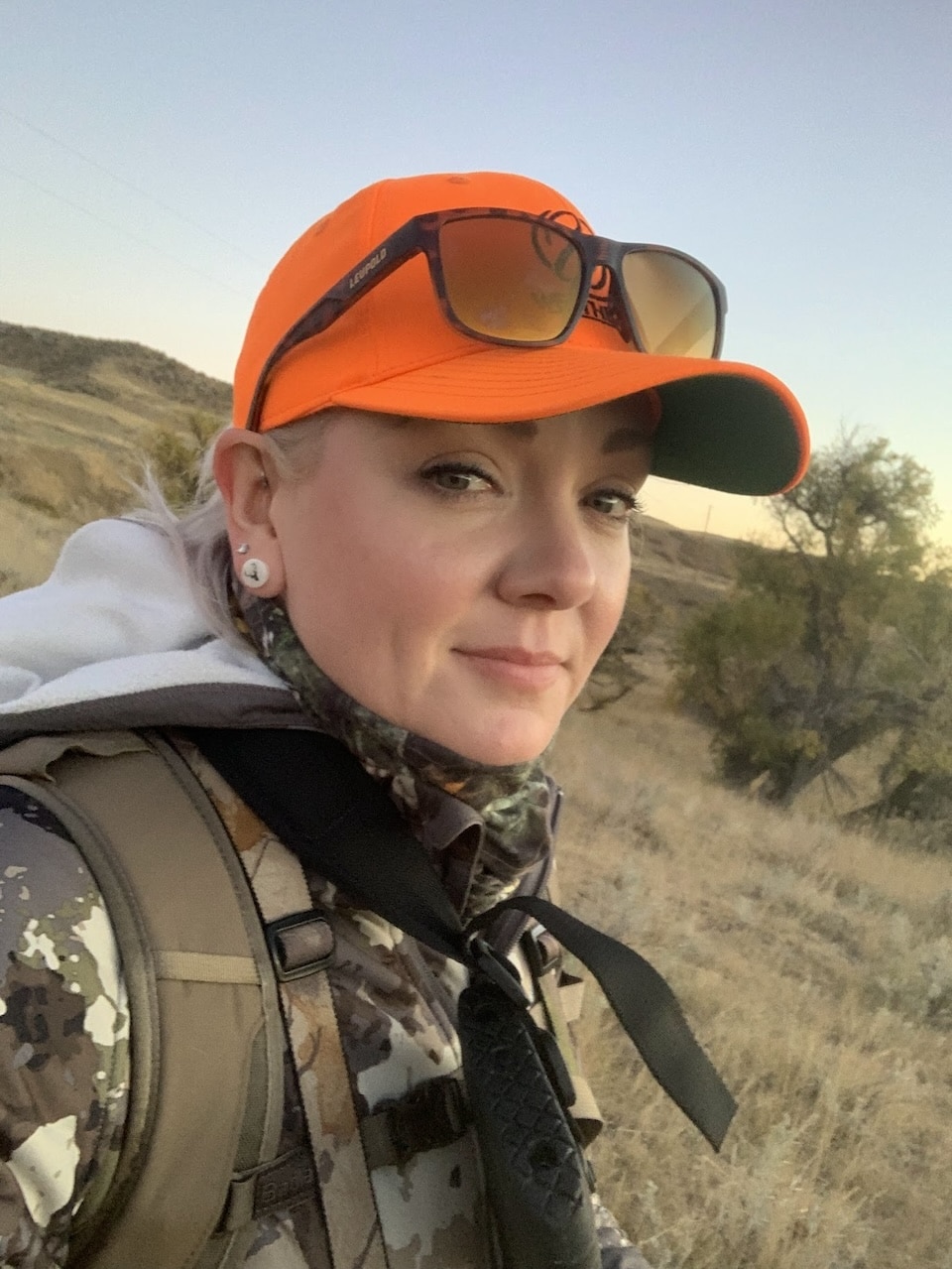
Aimee Botkins was born and raised in Southeast Wyoming. Much of her youth was spent outdoors with her family, from the endless horizons of the plains to the majesty of the Sierra Madres, giving her a passion for hunting and the outdoors. After a 15-year career working for the Circuit Court and the Office of the State Public Defender, she knew it was time for a change and pivoted hard to the firearms industry. Aimee began as the Executive Assistant to the President of Stag Arms and after almost three years has moved up as the Project Coordinator working remote for Aero Precision USA and its associated brands. She credits her success in the workplace to her ability to manage chaos and communicate effectively – although she notes that even on the best days whiskey always helps. Aimee has been married to her husband, Chris, for 15 years and they have two beautiful daughters. In 2022, they moved their family to northeast Wyoming and have made the area their home. They spend as much time as possible enjoying the richness of the Big Horn Mountains with their family and friends.
The Women's Outdoor News, aka The WON, features news, reviews and stories about women who are shooting, hunting, fishing and actively engaging in outdoor adventure. This publication is for women, by women. View all posts by The WON